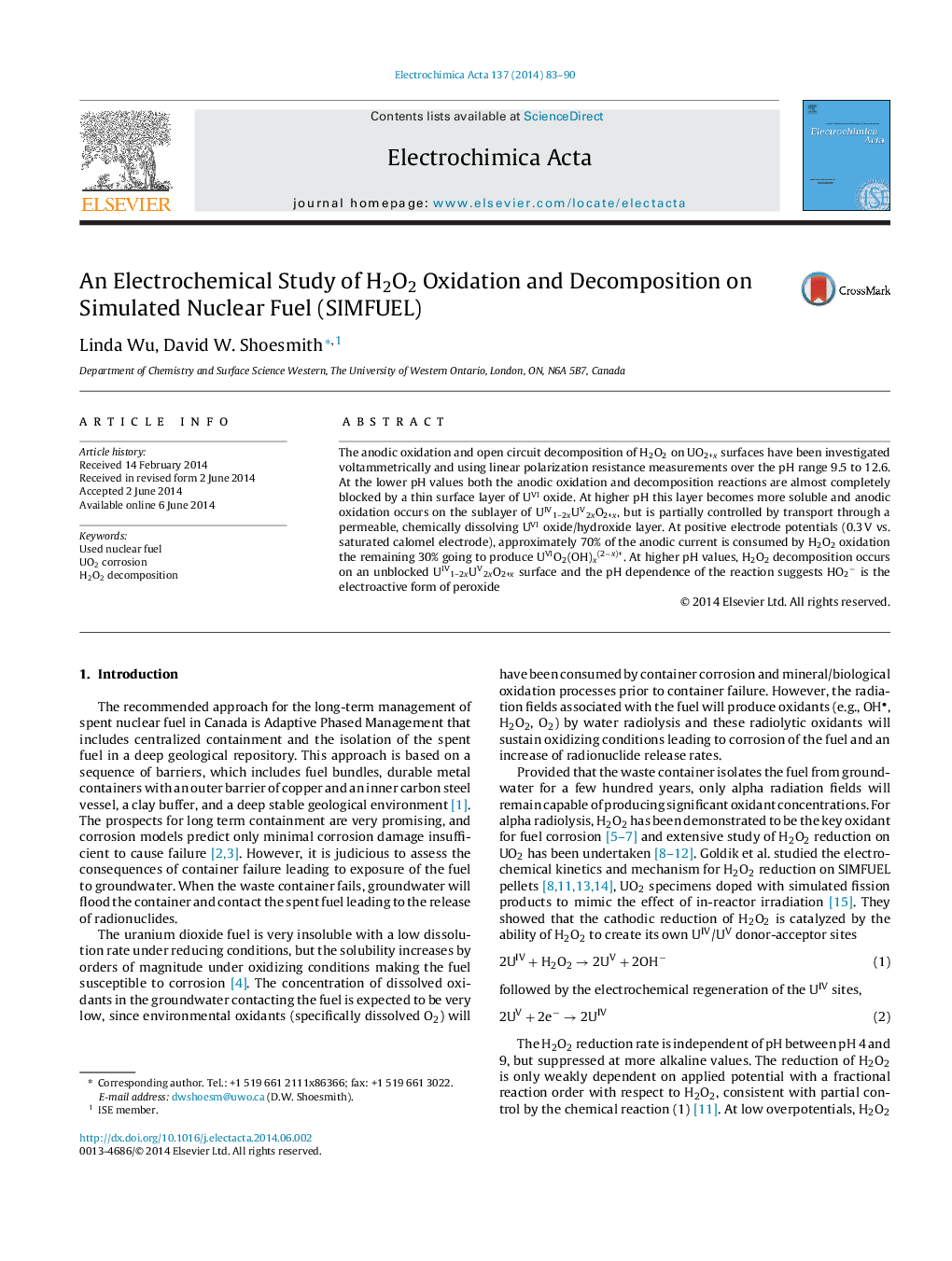| Article ID | Journal | Published Year | Pages | File Type |
|---|---|---|---|---|
| 185549 | Electrochimica Acta | 2014 | 8 Pages |
•We study anodic oxidation and open circuit decomposition of H2O2 on used nuclear fuel.•The effect of pH (9.5-12.5) on H2O2 redox behaviour on UO2 is examined.•H2O2 decomposition is blocked at pH = 9.5 by a thin surface layer of U(VI) oxide.•At higher pH values H2O2 decomposition occurs on an unblocked U(IV)/U(V) surface.•At 0.3 V vs. SCE, H2O2 oxidation is the primary reaction, not UO2 dissolution
The anodic oxidation and open circuit decomposition of H2O2 on UO2+x surfaces have been investigated voltammetrically and using linear polarization resistance measurements over the pH range 9.5 to 12.6. At the lower pH values both the anodic oxidation and decomposition reactions are almost completely blocked by a thin surface layer of UVI oxide. At higher pH this layer becomes more soluble and anodic oxidation occurs on the sublayer of UIV1–2xUV2xO2+x, but is partially controlled by transport through a permeable, chemically dissolving UVI oxide/hydroxide layer. At positive electrode potentials (0.3 V vs. saturated calomel electrode), approximately 70% of the anodic current is consumed by H2O2 oxidation the remaining 30% going to produce UVIO2(OH)x(2−x)+. At higher pH values, H2O2 decomposition occurs on an unblocked UIV1–2xUV2xO2+x surface and the pH dependence of the reaction suggests HO2− is the electroactive form of peroxide
